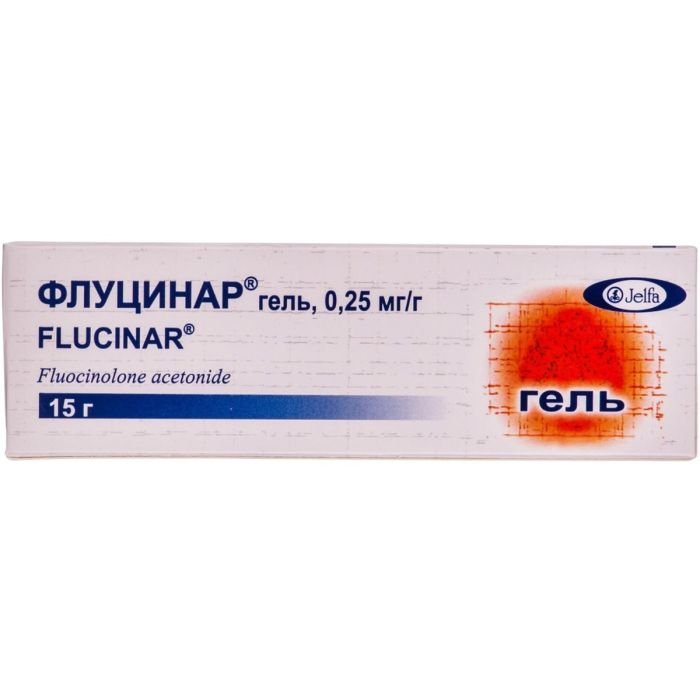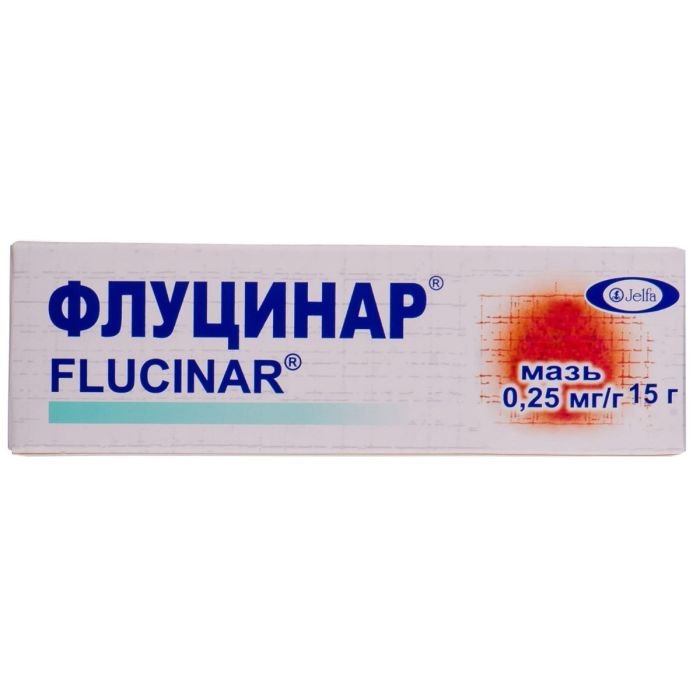Skin conditions are a common cause of discomfort in both adults and children. Allergic rashes, eczema, psoriasis, or dermatitis can appear suddenly and significantly impact well-being. In such cases, it is important to relieve itching and inflammation promptly. One of the most effective topical treatments is Flucinar ointment — a corticosteroid-based medication with anti-inflammatory and anti-allergic properties.
How to Use Flucinar Ointment for Allergy Symptoms
Flucinar is used for external application in non-infectious inflammatory skin conditions. It contains fluocinolone acetonide — a synthetic corticosteroid that blocks the release of inflammatory mediators. This helps reduce redness, swelling, itching, and flaking.
Apply a thin layer to the affected area once or twice a day. The usual course is 5–10 days, not exceeding 2 weeks. When applied to the face, the duration should be shorter — up to 7 days. Prolonged use or application over large areas increases the risk of side effects typical of hormonal creams, including skin thinning and hyperpigmentation.
Use guidelines:
- Not recommended for children under 2 years.
- Do not apply to open wounds or mucous membranes.
- Avoid use in case of allergy to any ingredients.
If allergic skin symptoms are accompanied by stress or insomnia, a holistic approach with gentle calming remedies such as valerian or Novo-Passit may be helpful.
When Flucinar Helps and How to Use It
This product is used for various skin conditions involving inflammation, itching, or flaking, such as:
- eczema;
- psoriasis;
- seborrheic and contact dermatitis;
- lupus erythematosus (as part of systemic treatment under medical supervision);
- insect bites with pronounced skin reaction.
Flucinar gel is preferred for acute flare-ups or weeping lesions — it absorbs faster, leaves no greasy residue, and creates a cooling effect. For dry or flaking skin, the ointment is a better option, while Flucinar cream works well for mild forms of dermatitis on sensitive areas like the face or joint folds.
Despite its effectiveness, Flucinar should not be used without proper indications. Always consult a dermatologist to reduce the risk of local and systemic side effects, especially if symptoms persist for more than 10 days.
Flucinar vs. Synalar: What’s the Difference?
Both Flucinar and Synalar are topical anti-inflammatory treatments containing fluocinolone acetonide. This corticosteroid compound helps reduce itching, redness, and swelling by inhibiting the skin’s inflammatory response.
Key differences:
-
Form:
Flucinar is available in ointment, cream, and gel forms, making it easier to choose based on the skin type — dry, irritated, or weeping.
Synalar is more commonly available as ointment or cream only.
-
Texture:
Flucinar’s ointment is thicker, and the gel provides a fast-absorbing, cooling effect.
Synalar’s cream is often used for milder inflammation on sensitive skin, though it may be harder to find in stores.
If you are looking for a trusted corticosteroid cream, you can order the original Flucinar at USA Apteka.
Important: Any treatment, including topical corticosteroids like Flucinar, should only be used after consulting a doctor. Proper diagnosis, awareness of contraindications, and the right treatment plan ensure safety and effectiveness.
Please Chat with us or send us a message on WhatsApp





